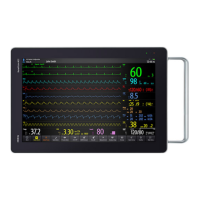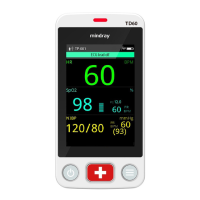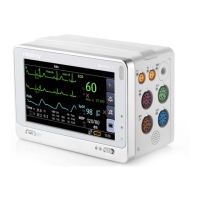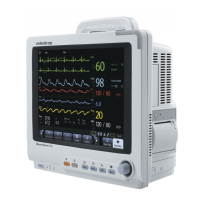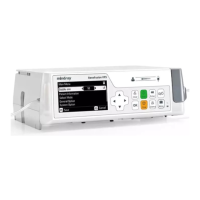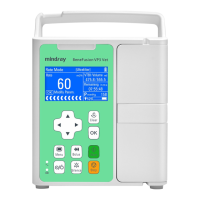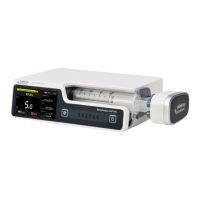13 - 8 BeneVision N1 Patient Monitor Operator’s Manual
Obtain the measurement by introducing a balloon-tipped pulmonary artery flotation catheter into the
pulmonary artery. When the catheter is in one of the smaller pulmonary arteries, the inflated balloon occludes
the artery allowing the monitor to record changes in the intrathoracic pressures that occur throughout the
respiration cycle.
The pulmonary wedge pressure is the left ventricular end diastolic pressure when the airway pressure and valve
function are normal. The most accurate PAWP values are obtained at the end of the respiration cycle when the
intrathoracic pressure is fairly constant and the artifact caused by respiration is minimal.
• PAWP monitoring is not intended for neonatal patients.
13.6.1 PAWP Equipment to Patient Connection
13.6.2 Preparing to Measure PAWP
To prepare to monitor PAWP, follow this procedure:
1. Connect the IBP transducer, the IBP cable and the module. For more information, see
13.2.2Measuring an
Invasive Blood Pressure.
2. Follow the manufacturer’s instructions to connect the PA port of the thermodilution catheter and the
patient end of the IBP transducer.
(1) N1 monitor (2) Flush bag
(3) IBP transducer (4) Three-way valve
(5) PA distal port (6) Balloon inflation syringe
(7) Thermodilution catheter (8) Balloon
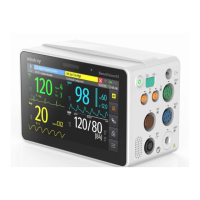
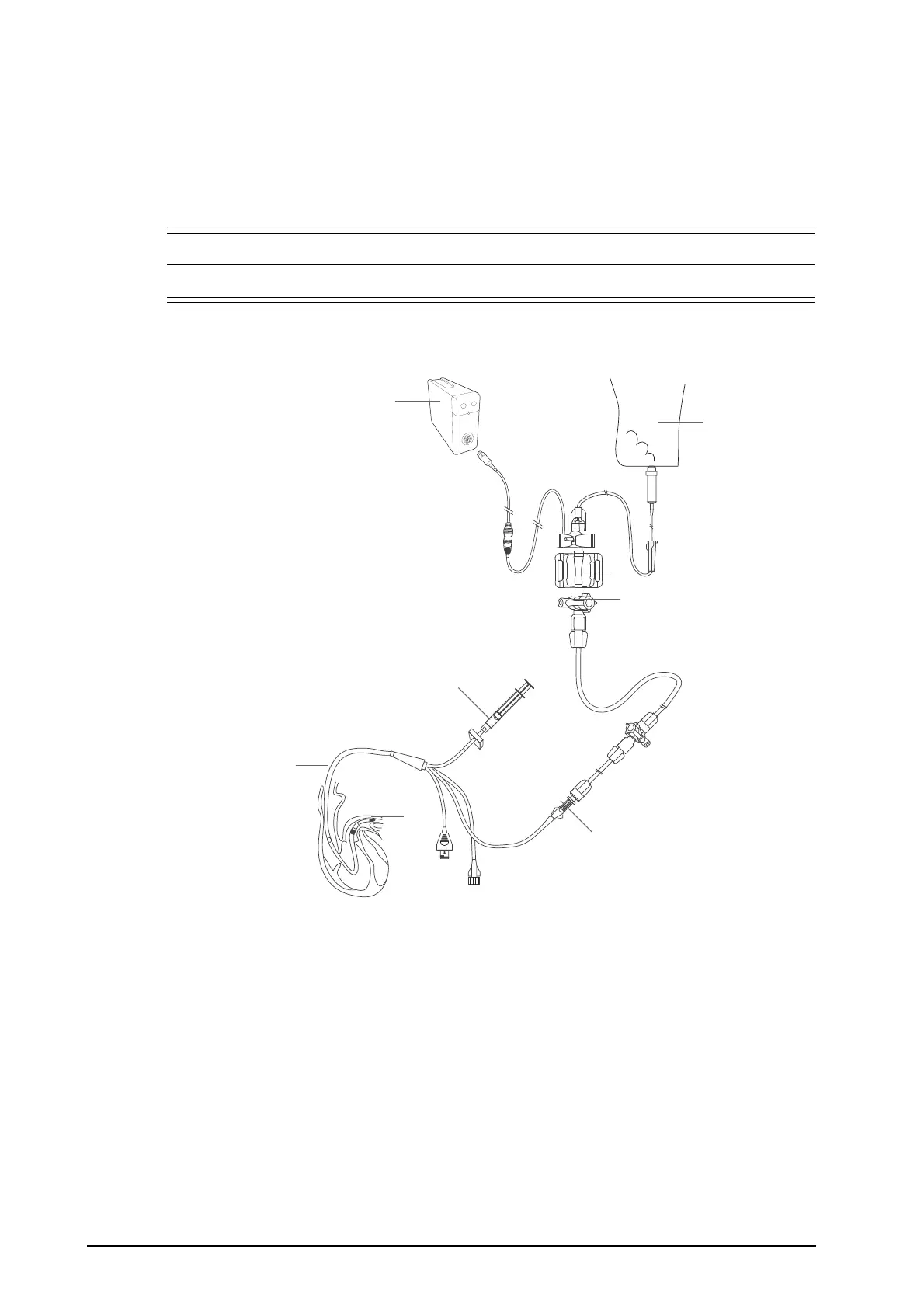